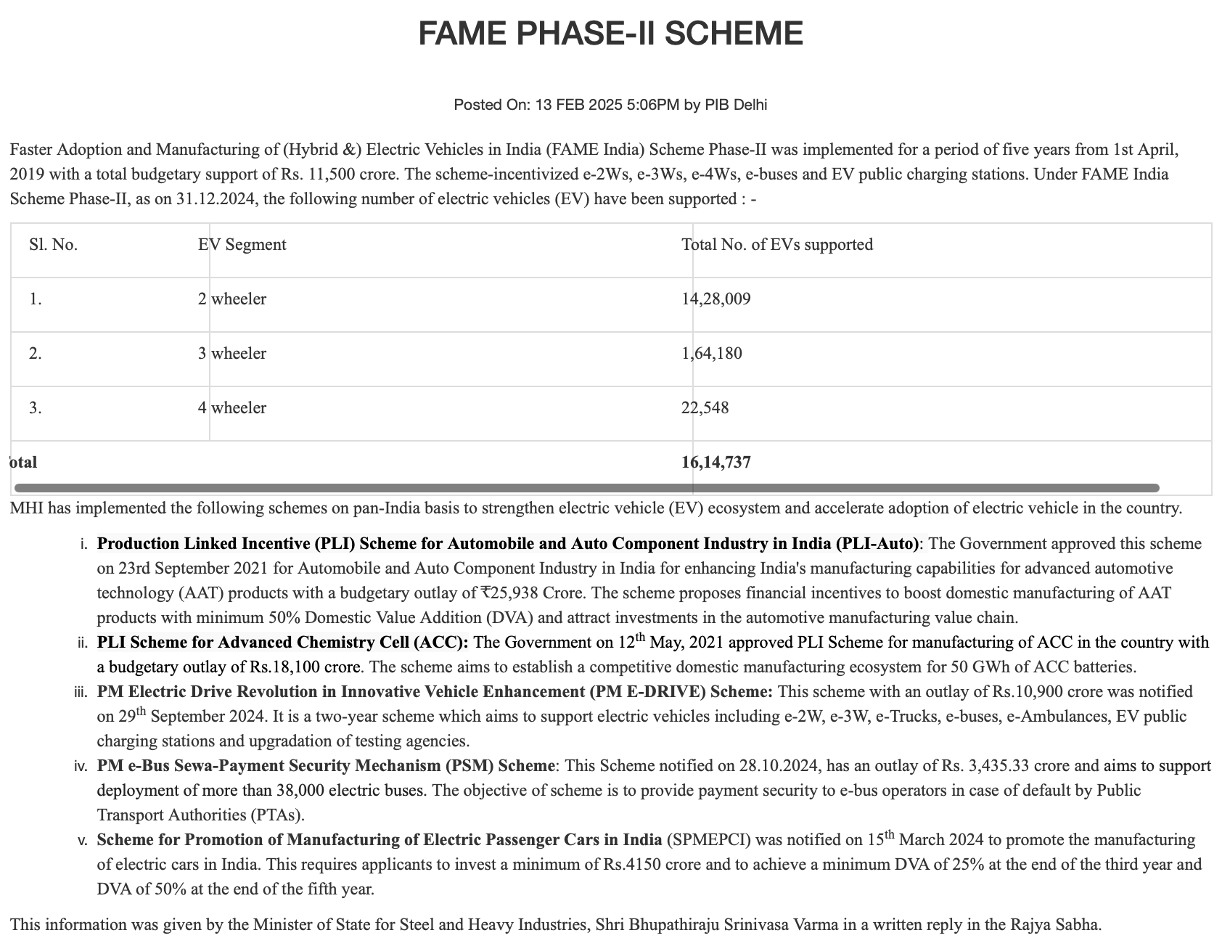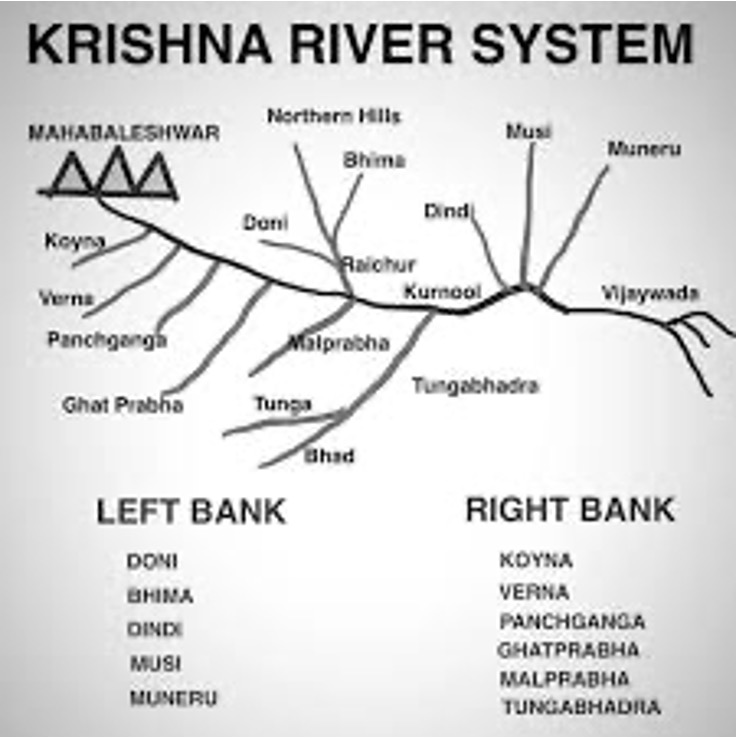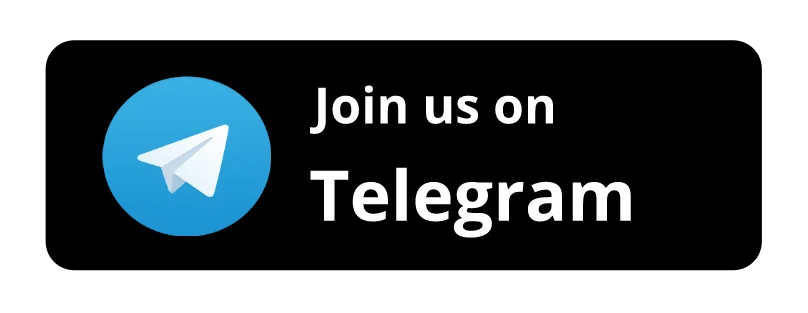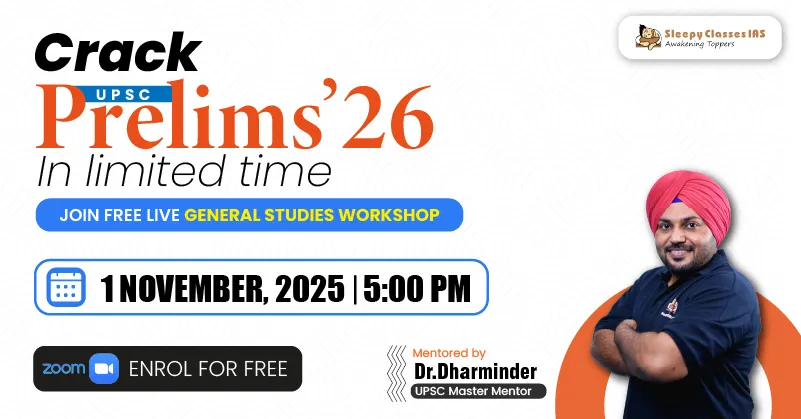Question 1
Environment | Pollution | Medium | The Hindu
SOURCE
Consider the following:
1. FAME Scheme Phase-II was implemented for a period of five years from 1st April 2019.
2. Scheme for Promotion of Manufacturing of Electric Passenger Cars in India is a part of FAME Scheme Phase-II.
Which of the statements above is or are correct?
A. 1 only
B. 2 only
C. Both 1 and 2
D. None of the above
Solution & Detailed Explanation
Answer: (C) Both 1 and 2
Detailed Explanation

Question 2
Economy | Basics | Medium | The Hindu
SOURCE
Which of the following is not a reason for excess demand ?
A. Reduction in Taxes
B. Fall in propensity to consume
C. Increase in investments
D. Increase in government spending
Solution & Detailed Explanation
Answer: (B) Fall in propensity to consume
Detailed Explanation
- If the equilibrium level of output is more than the full employment level, it is due to the fact that the demand is more than the level of output produced at full employment level. This situation is called the situation of excess demand. It leads to a rise in prices in the long run.
- Reduction in Taxes: A reduction in taxes means consumers have more disposable income. With more money to spend, their consumption increases, which can lead to increased overall demand and potentially excess demand.
- Fall in propensity to consume: A fall in the propensity to consume means individuals are saving more of their income and spending less. This leads to a decrease in aggregate demand, which is the opposite of a reason for excess demand.
- Increase in investments: Higher levels of investment by businesses stimulate economic activity and employment, leading to increased income and spending in the economy, potentially causing excess demand.
- Increase in government spending: When the government increases its spending, it directly injects more money into the economy, boosting aggregate demand and potentially leading to excess demand.
Question 3
International Relations | Places In News | Medium | The Hindu
SOURCE
Consider the following:
1. The Kokrajhar-Gelephu line is a part of the Act East Policy of India.
2. The Act East Policy was adopted in 1991 by India.
Which of the statements above is or are correct?
A. 1 only
B. 2 only
C. Both 1 and 2
D. None of the above
Solution & Detailed Explanation
Answer: (A) 1 only
Detailed Explanation
- India’s Act East Policy, launched in 2014, is a diplomatic initiative to strengthen economic, strategic, and cultural relationships with countries in the Indo-Pacific, with the Association of Southeast Asian Nations (ASEAN) at its core. It is an upgrade of the
- “Look East Policy” that was introduced in 1991. The Act East policy is primarily a response to China’s growing influence in the region. a
- Key pillars and features
- Four Cs Framework: The policy is guided by the 4Cs: Culture, Commerce, Connectivity, and Capacity Building.
- ASEAN-centric approach: India’s engagement with the region prioritizes its partnership with ASEAN, strengthening diplomatic and security ties through forums like the ASEAN-India Summit and the East Asia Summit (EAS).
- Broader scope: The policy expands India’s reach beyond Southeast Asia to include the wider Indo-Pacific, with increased engagement with countries like Japan, South Korea, Australia, New Zealand, and the Pacific Islands.
- Focus on Northeast India: A key objective is to enhance connectivity and economic development in India’s Northeast region, positioning it as a gateway to Southeast Asia.
Question 4
Economy | Basics | Medium | The Hindu
SOURCE
Match List – I with List – II
| List – I (Elements) | List – II (Features) |
|---|---|
| 1. Annual Financial Statement | (I) Create liabilities or reduce financial assets |
| 2. Capital Receipts | (II) Trade Surplus |
| 3. Capital Payments | (III) Main budget document |
| 4. Export > Import | (IV) Create financial assets or reduce liabilities |
Choose the correct answer from the options given below :
A. (1) – (I), (2) – (II), (3) – (III), (4) – (IV)
B. (1) – (III), (2) – (I), (3) – (IV), (4) – (II)
C. (1) – (I), (2) – (II), (3) – (IV), (4) – (III)
D. (1) – (III), (2) – (IV), (3) – (I), (4) – (II)
Solution & Detailed Explanation
Answer: (B) (1) – (III), (2) – (I), (3) – (IV), (4) – (II)
Detailed Explanation
| List – I (Elements) | List – II (Features) |
|---|---|
| 1.Annual Financial Statement | (III) Main budget document |
| 2.Capital Receipts | (I) Create liabilities or reduce financial assets |
| 3.Capital Payments | (IV) Create financial assets or reduce liabilities |
| 4.Export > Import | (II) Trade Surplus |
Question 5
Geography | Drainage System | Easy | The Hindu
SOURCE
Which among the following rivers are not the right bank tributaries of Krishna?
A. Panchganga
B. Koyna
C. Dindi
D. Malaprabha
Solution & Detailed Explanation
Answer: (C) Dindi
Detailed Explanation

Question 6
Economy | Basics | Medium | The Hindu
SOURCE
The industrial policy closely related to the trade Policy which aimed at replacing imports with domestic production is known as :
A. Import substitution
B. Export promotion
C. Domestic substitution
D. Export substitution
Solution & Detailed Explanation
Answer: (A) Import substitution
Detailed Explanation
- Import substitution: Policy aimed at replacing or substituting imports with domestic production.
- For example, instead of importing vehicles made in a foreign country, industries would be encouraged to produce them in India itself.
- In this policy the government protected the domestic industries from foreign competition.








